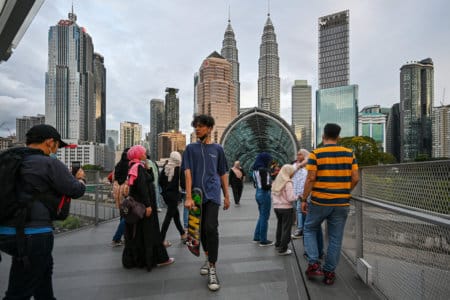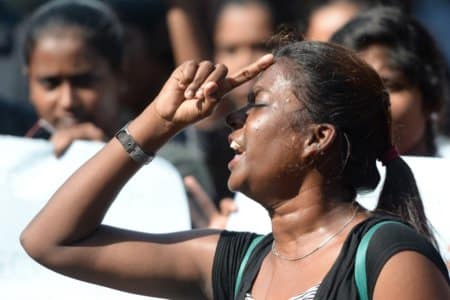
Every year, many of us dream of moving to the Big Four — the US, UK, Canada, and Australia, which are rich, developed countries home to globally excellent universities and programmes.
While these countries are popular for those with hopes of starting a new life and career there, they often come with a hefty price tag.
In the US, the annual average for a bachelor’s degree costs about US$40,000 — and this doesn’t include other costs such as rent, visa fees, health insurance, personal spending, and transportation expenses. The UK, Canada, and Australia are only marginally cheaper at best.
What’s someone without these kinds of funds to do?
The answer is to look towards developing countries as a study abroad option.
The controversy behind the term ‘developing countries’
The World Bank has for many years referred to “low and middle-income countries” as “third-world countries” or “developing countries.”
Common misconceptions revolved around most developing countries having lower levels of access to safe drinking water, sanitation and hygiene, energy poverty, and higher levels of pollution, such as air pollution, littering, water pollution, and open defecation.
Many also avoid developing countries because of concerns about safety and political stability.
According to this World Bank classification, “developing” countries are:
- low-income countries with a GNI (Gross National Income) per capita of US$1,035 or less
- Middle-income countries with a GNI per capita of more than US$1,035 but less than US$12,616
However, in 2015, the World Bank made an announcement changing the way international development was categorised. They declared that the use of “developing/developed world categorisation” had grown increasingly obsolete and would be gradually phased out.
The term “Global South” is used by some as an alternative term to developing countries.
This declaration acknowledged the evolving worldwide situation, marked by swift economic advancement in certain nations typically referred to as “developing” and the socio-economic challenges in some “developed” nations.
So while these countries may not have all the money and glory that the Big Four destinations have, they are still cheaper to study and live in, and that’s not necessarily a bad thing.

You may be surprised what these developing countries have to offer. Source: AFP
Should I go to a university in any of these developing countries?
When it comes to studying abroad, developing countries aren’t usually at the top of your mind, and there are reasons for this.
Universities in developing countries are often underrepresented in the top global rankings; you’ll see the top choices being dominated by prestigious institutions across the Big Four, rather than developing countries.
It has led students to assume that education in these countries may not meet international standards.
Even if students look towards regions like Asia, the most popular study-abroad destinations, such as China, Singapore, and South Korea, often get the spotlight.
In actual fact, there are other choices that offer affordable education and low costs of living.
Certainly, they may not have a shiny ranking, but they have produced several notable graduates in their own right.
What you learn within and beyond the classroom, the people you network with, and the campus environments are often not reflected in ranking systems, making them easy factors to gloss over, when in fact they are some of the more important elements that may make or break your university journey.
More importantly, they have friendly recruitment programmes and incentives to increase the international student population — and it’s nice to feel welcomed by a country that wants you.
Let’s take a look at some of them:
9 developing countries with the best and most affordable education

Thailand’s nightlife is one of the most famous and vibrant in the world. Source: AFP
1. Thailand
Thailand is known to be one of the most popular Asian countries for travel.
It’s no surprise, considering the country is one of the most beautiful countries in the world and is frequently featured as a top 10 must-visit destination.
Much of this has to do with the beautiful beaches in Krabi and Phi Phi Island, over 40,000 Buddhist temples and many hidden markets with delicious food such as pad thai and tom yam.
While Thailand is the perfect country for travel, it is also one of the best developing countries for affordable education.
The average cost of tuition fees in Thailand varies from US$17,000 to US$28,000 for four years, depending on the programme.
International students can enjoy an excellent education without breaking the bank, pursuing programmes in the country’s top institutes — Mahidol University, Chulalongkorn University and Chiang Mai University.
Several members of the Thai royal family graduated from Mahidol University, such as Her Royal Highness Princess Chulabhorn and Princess Mother Srinagarindra.
Chulalongkorn University hosts over 2,000 international students from over 60 countries annually, and offers more than a hundred English-taught programmes for all levels of degrees.

Malaysia may be a developing country, but it offers world-class universities at an affordable price. Source: AFP
2. Malaysia
As a multiracial country, Malaysia is a great option for students who want to immerse themselves in the cultures of its three main races (Malay, Chinese and Indian) as well as its many Indigenous tribes.
Malaysia offers low tuition fees, summer all year round, arguably the richest food in the region, and, most importantly, the affordable cost of living.
Top universities with healthy international student recruitment include Universiti Malaya (UM), Universiti Kebangsaan Malaysia (UKM), Taylor’s University, Sunway University, INTI International University, and more.
Beyond this, the country hosts several international universities such as the University of Nottingham from the UK and Monash University from Australia, which offer students the opportunity to earn UK and Australian degrees at Malaysian prices.
Tan Sri Hamidon Ali, the first Malaysian to be appointed President of the United Nations Economic and Social Council, is a Monash graduate.
Tuition fees come up to an average of US$4,000 per academic year.

Rwanda attracts students from around the world due to its solar energy plans and environmental entrepreneurial opportunities. Source: AFP
3. Rwanda
Forecasted to become the “Singapore of Africa,” the Central African country of Rwanda has emerged as an up-and-coming education hub for international students.
Unfortunately, many overlook this beautiful country due to its genocidal history. But unbeknownst to many, Rwanda has come a long way since then and is now one of Africa’s most promising nations.
Today, it is one of Africa’s cleanest and greenest cities. Its solar energy plans and environmental entrepreneurial opportunities are slowly attracting international students worldwide.
The University of Rwanda is the country’s largest institution, with over 30,000 students, and has notable partnerships with international universities like the Harvard School of Dental Medicine.
Other universities, such as Kibogora Polytechnic and the University of Kigali, also offer strong programmes and vibrant international communities.
Tuition fees here can go as low as US$1,000 per year.
View this post on Instagram
4. Kenya
In general, Africa is often overlooked by many when choosing a study-abroad destination.
This continent, however, is home to several developing countries that offer affordable first-world education.
Over the years, it has attracted many international students, especially American students, with around 1,200 students choosing to study abroad in Kenya each year.
One institution that stands out is the University of Nairobi, Kenya’s leading educational institution.
It offers ICT, information technology, and computer science programmes, and it collaborates with INTEL to accelerate innovation in the country.
Intel General Manager for East Africa, Mr. Danie Steyn, said: “Intel recognises the role of innovation in driving sustainable growth and as such will continue to invest in young innovators to empower them to develop solutions for now and the future.”
Other notable alumni include Abon’go Malik “Roy” Obama, the paternal half-brother of former US president Barack Obama.
Here, international students need not worry about debt as tuition fees range between US$1,380 and US$5,000 per year.

Higher education in India is well known for its affordability and high quality. Source: AFP
5. India
Whether you prefer hiking the Himalayas, visiting wildlife sanctuaries, or going to yoga getaways, you’ll find India to be one of the best developing countries to travel or study in.
Tuition fees here vary depending on the education level and institution chosen. Usually, tuition fees cost just under US$7,880 per year.
India boasts two world records: it is the most populous country in the world, with the most extensive higher education system.
Narendra Damodardas Modi, Prime Minister of India, often says, “Education should never be obstructed as it is the greatest investment in life.”
Now, he’s working towards internationalising education in the country – all in hopes of turning India into a global education hub.
Some top entrepreneurs today started at the famed Indian Institutes of Technology, such as Alphabet CEO Sundar Pichai and the founders of Flipkart, Sachin Bansal and Binny Bansal.
Though English is not the main language spoken in India, it is often used as the language of instruction at universities in India, especially at the postgraduate level.
View this post on Instagram
6. Russia
Russian unis are quickly scaling the heights of global rankings thanks to their world-leading programmes in science, technology, engineering, and mathematics (STEM).
Lomonosov Moscow State University (MSU), ranked first in Russia and 94th worldwide in the QS World University Rankings 2025, offers the following programmes: business management, life sciences and medicine, anthropology and many more.
Malaysian doctor turned entrepreneur Rajiv Bhanot completed his medical education in Russia, and described the experience as phenomenal.
“Many medical universities around the world let you play around with plastic models and computer programmes when you’re studying anatomy,” he said. “In Moscow, you’re playing with actual cadavers.”
Studying here is a chance to be part of one of the world’s most highly educated populations, since over half of Russian nationals have a university degree
It’s also an affordable way to spend a few years abroad. Studying for a bachelor’s degree would cost you about US$3,690 to US$4,000 annually.
The only downside? The bitter cold, with temperatures dropping to a record low of -62.7 degrees.

Chinese universities are renowned for their excellence in science, technology engineering and math. Source: AFP
7. China
Want an excellent education in a country with a thriving economy, unique and delicious cuisine, and abundant entertainment options? Then consider studying in the country with the second-biggest population.
China is home to one of the world’s largest and strongest higher education systems, and its students take on the GaoKao, known as one of the hardest exams in the world.
It’s also one of the most significant contributors to AI research globally, and a formidable competitor to the US’s prowess in the AI arms race.
Among Asian universities, 124 Chinese institutions are featured in the rankings, with the prestigious Tsinghua University leading the pack, securing second place.
Notable alumni include Chinese President Xi Jinping, billionaire businesswoman and investor Zhang Zetian, Jiang Bin, co-founder of Chinese acoustic components company GoerTek, and Sun Hongbin, founder and chairman of developer Sunac, China’s fourth-largest property company.
Studying in China offers a unique opportunity to gain valuable insights into what is poised to become the world’s largest economy.
What’s more, you can practise or learn Mandarin, the world’s most widely spoken language, which is increasingly essential in international business and politics.
The best part? It’s affordable to study in China. Tuition can go as low as US$2,807 per year.

Indonesia has more than 700 ethnic and racial groups, of which 90% are Malay and indigenous, 5% Chinese and 5% minority. Source: AFP
8. Indonesia
Home to the largest economy in Southeast Asia with the world’s fourth-largest population, this developing country has so much more to offer international students.
Since its independence in 1945, Indonesia’s higher education sector has grown significantly.
Starting with only 10 institutions in 1950, the country now boasts almost 3,000 private and 150 public universities — of which 30 institutions rank in the top 350 in the Asian rankings, with Gadjah Mada University the highest ranked at 57th.
Its most famous alumni include Joko Widodo, the seventh president of Indonesia, who pursued a degree in forestry engineering and became a highly successful furniture exporter before he began his political career.
Currently, the country hosts around 6,000 international students — many of whom come from neighbouring countries, Malaysia and Thailand, for good reasons.
Tuition fees can go as low as US$2,400 to US$6,100 annually.
Don’t forget about the scenic island off South Sumatra, delicious Indonesian rendang and a rich culture too!
View this post on Instagram
9. Ghana
Many still think of it as a developing country, but Ghana is in fact one of the most developed nations in West Africa to date.
Study and live among its beautiful beaches spread along the coast, to its lively, vibrant cities, and then up to the mysterious grasslands and forests in the north, all while enjoying the rich and diverse variety of cultures the local scene has to offer.
The capital city, Accra, is home to the University of Ghana, the country’s leading educational institution. Another leading university is the University of Cape Coast, situated in a coastal city with a pleasant tropical climate and vibrant local scene.
Several Ghanaian politicians and leaders have graduated from the University of Ghana, such as the country’s 13th president, William Nana Addo Dankwa Akufo-Addo, and the president after him, John Dramani Mahama.
The country is home to several English-taught programmes, and many locals speak the language, so there is little to worry about when it comes to language barriers.
For international students, an undergraduate course in the University of Ghana starts from approximately US$4,000 a year.
Disclaimer: This article was last updated on May 15, 2025.










